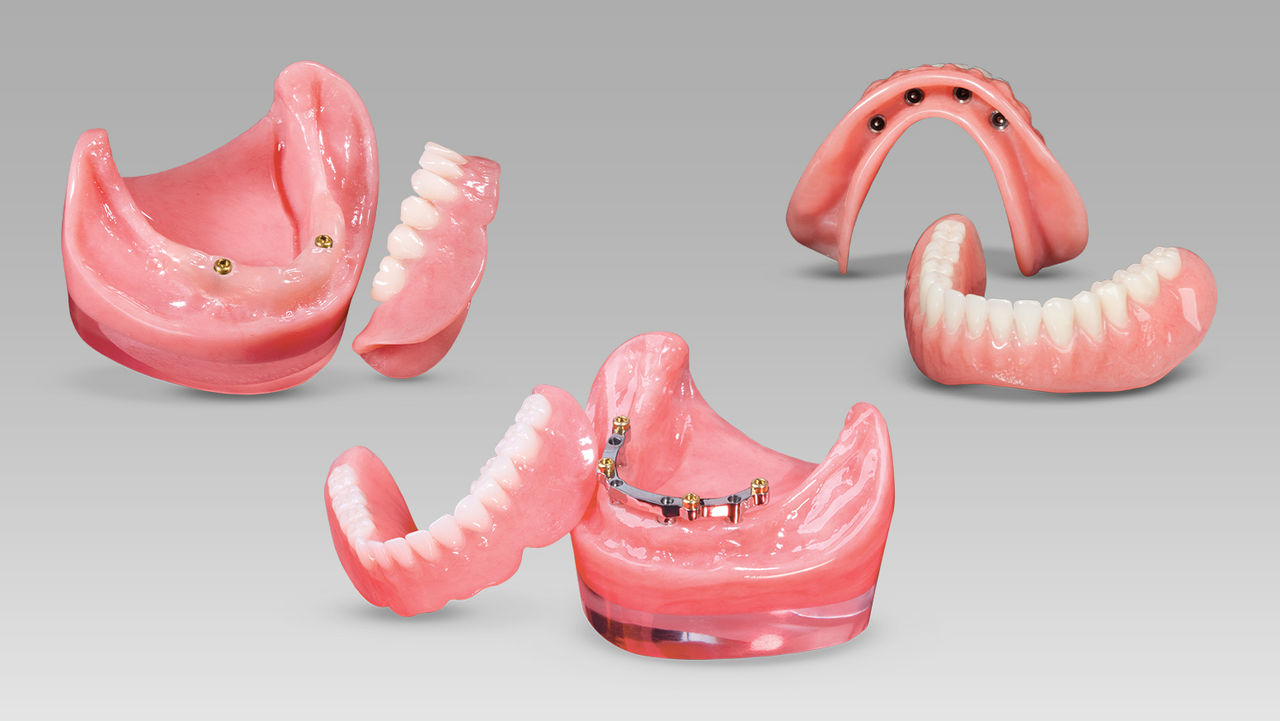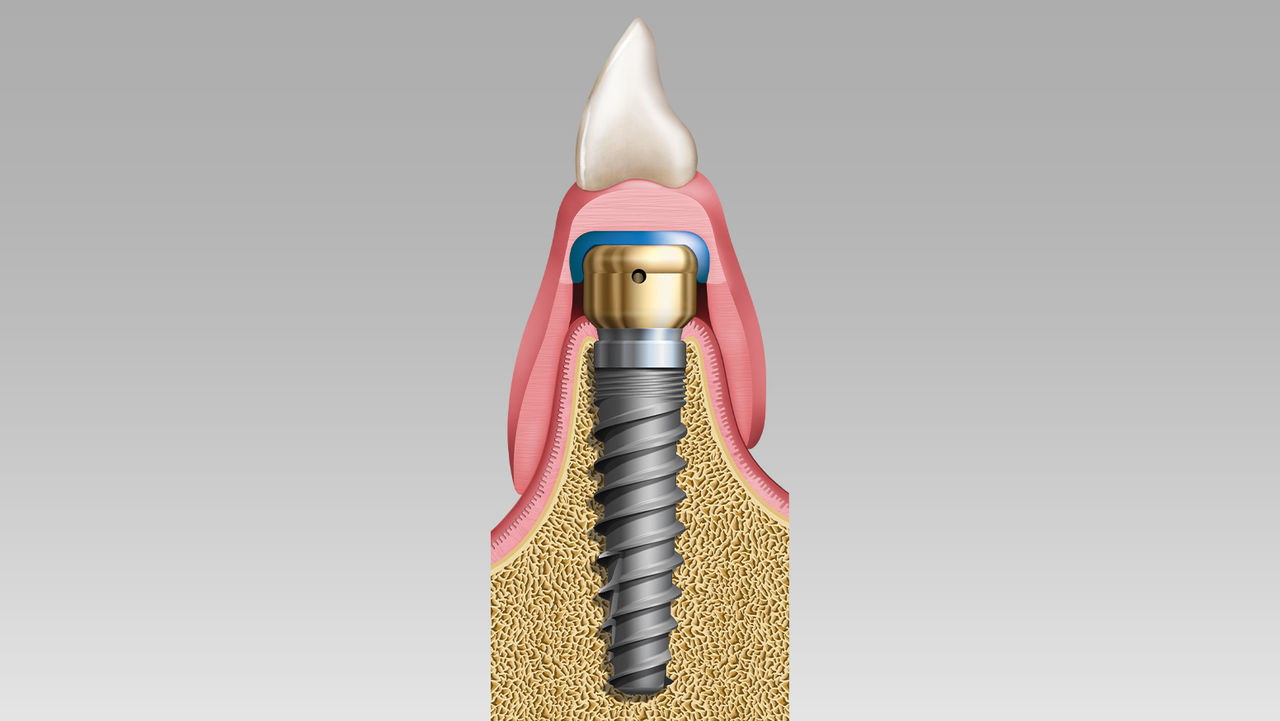While traditional dentures remain the most common method of treating fully edentulous patients, these removable appliances cause issues in many cases, including discomfort, sore spots, prosthetic instability, and a diminished capability to speak and chew.¹ For this reason, implant-supported dentures, or implant overdentures, have become an increasingly popular choice among patients. Because implants serve as anchors that stabilize the denture and hold the prosthesis in place, patients report improved chewing function, speech and comfort, as well as substantially higher rates of satisfaction with treatment and oral health-related quality of life.²
While the fixed full-arch implant restoration, which holds the prosthesis in place via screw retention, represents the premium option for fully edentulous implant patients,³ the removable implant overdenture is an excellent treatment option for many. Implant overdentures are less expensive because fewer implants are required and they help many patients avoid the bone grafting procedures that are sometimes needed to facilitate a fixed prosthesis. Further, the surgical procedure for implant overdentures is more straightforward in many cases, allowing more general dentists to perform the procedure in their own practices, and thus expanding the availability of care to more patients, many of whom do not follow through with treatment when referred to a specialist for implant placement.
Dentists have three primary restorative options for implant overdenture cases, allowing for maximum flexibility when treatment planning for the edentulous arch. All three of these options provide for denture stabilization via an attachment system, in which the overdenture snaps over the implants and remains firmly in place during use, while allowing for removal by the patient for cleaning.
For dentists who are not yet placing implants for their fully edentulous patients, there are courses available that provide clinicians with straightforward surgical techniques for establishing the foundation needed for an implant overdenture. For those who prefer to refer out their patients for implant surgery, courses on the prosthetic protocols for fully edentulous patients can help dentists deliver a predictable restorative outcome.
Here, we will review the three most common implant overdentures, which patients they are ideally suited for, and the guidelines dentists can follow as they determine which option is best for the case at hand.
1. Mini Implant Overdentures
Although not as popular as conventional-diameter implants, small-diameter, or mini, implants can serve as a valuable addition to any implant practitioner’s armamentarium. Small-diameter implants, such as the Inclusive® Mini Implant System, have a simplified surgical protocol and are an excellent option for patients who can’t receive conventional-diameter implants due to limited finances, medical circumstances that preclude more invasive surgical procedures, or minimal bone volume that would otherwise require extensive grafting to facilitate implant treatment.
Unlike conventional-diameter implants, mini implants are engineered with O-ball heads that hold the overdenture in place by connecting to O-ring housings that fit snugly over the implants.










